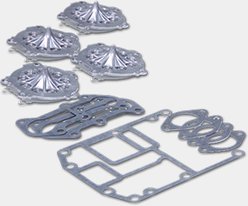Need to transport your portable Mercury outboard? Maybe you want to bring it home for the winter to store it in your garage, or perhaps you need to take it to the dealer for some routine maintenance. With a portable outboard, that’s not a problem. After all, ease of transport is one of this engine type’s biggest advantages.
Now, before you put your outboard in your vehicle, you will need to prepare it for transport. By following the steps below, you’ll protect the engine as well as prevent fuel from leaking out into your vehicle.
It’s important to note that when transporting a portable outboard on its side, make sure you have the correct side facing up. As a reminder, every portable Mercury outboard features a sticker on the lower cowl that identifies the correct orientation for transport. Laying an outboard on the wrong side will cause the oil to drain out of the crankcase and into the cylinders, which can cause damage to the engine.
To prepare your portable Mercury outboard for transport, follow these simple steps. You can also watch the video below to see how it’s done.
For internal fuel tank models:
- Whether your outboard is still connected to your vessel or it’s been removed, you must first submerge the gearcase to ensure the water intake can pull in water and cool the engine. For the purposes of this video, we are using an outboard that has been removed from the vessel, with the gearcase submerged in a large bucket of water.
- Start the engine with the gearcase submerged, close the fuel valve and run the engine until it comes to a complete stop.
- After the engine has fully stopped, close the fuel tank vent.
- Next, remove the outboard from the bucket, holding it upright until all the water has drained.
For remote fuel tank models:
- Whether your outboard is still connected to your vessel or it’s been removed, you must first submerge the gearcase to ensure the water intake can pull in water and cool the engine. For the purposes of this video, we are using an outboard that has been removed from the vessel, with the gearcase submerged in a large bucket of water.
- Start the engine with the gearcase submerged, disconnect the remote fuel line and run the engine until it comes to a complete stop.
- After the engine has fully stopped, install the protector cap over the fuel line connector.
- After installing the protector cap, it’s time to remove the outboard from the bucket, holding it upright until all the water has drained.
After completing the steps above, it’s safe to transport the outboard either in an upright position or on its side. When transporting your outboard on its side, please refer to the sticker on the lower cowl to ensure the correct side is facing up.
It’s also a good idea to wrap your outboard with some old towels, rags or blankets to help protect the outboard as well as the surface of your vehicle from getting scratched or dinged. You may want to consider placing the covered outboard in a position that best prevents it from moving around in transit. This, too, protects both the outboard and your vehicle.
That’s really all there is to it – now you’re ready to haul your portable outboard for storage, or for your next adventure.

















